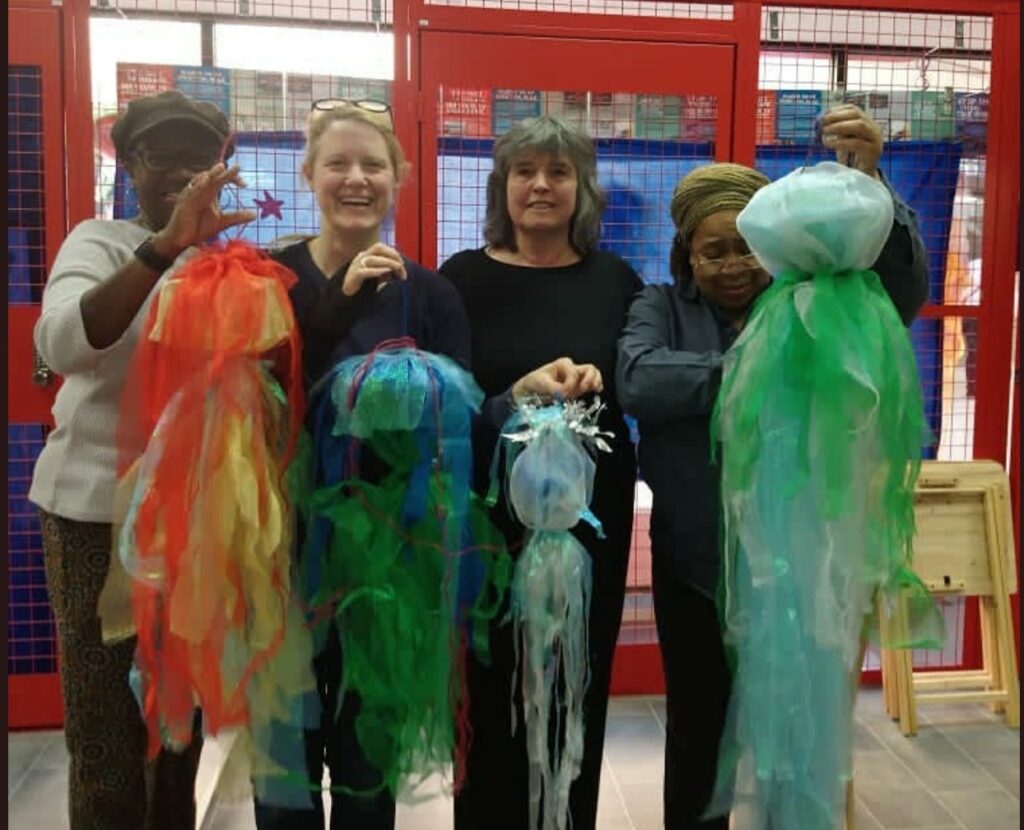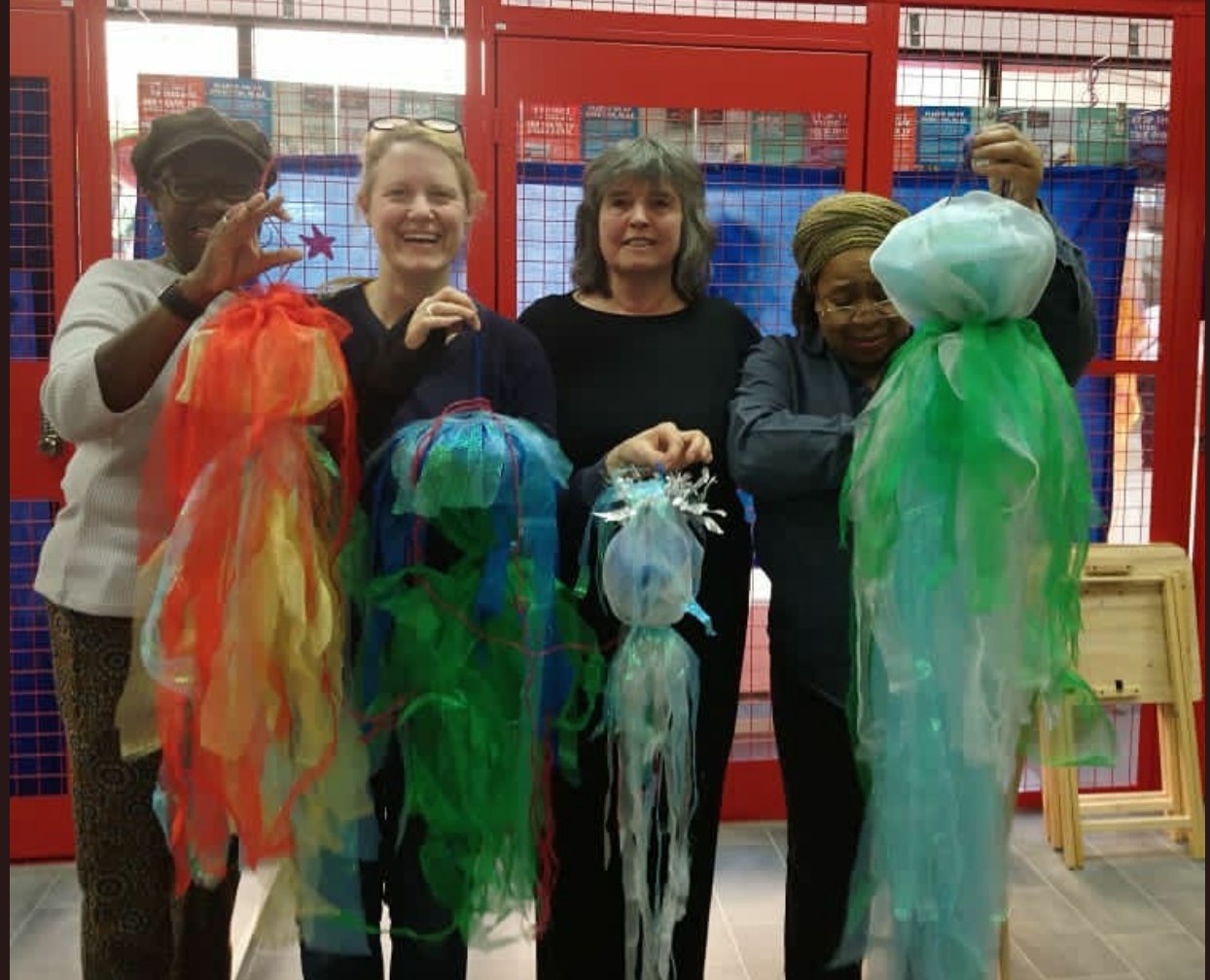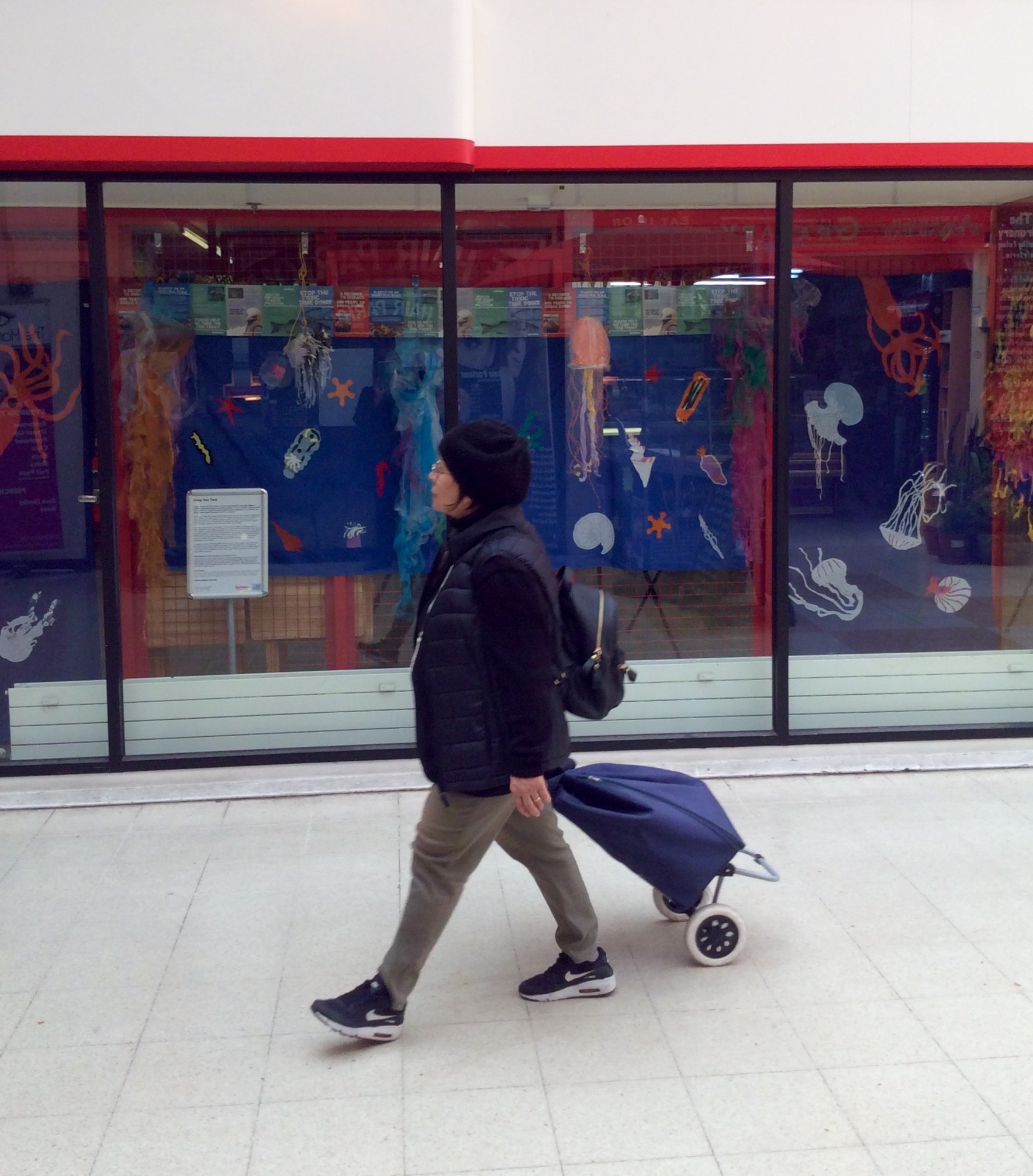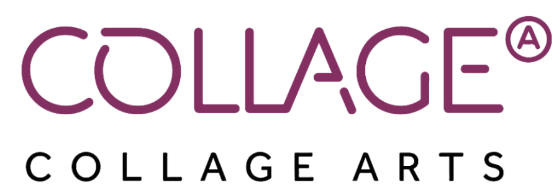
Deep Sea Tank installation
Deep Sea Tank Installation by Fiona Carson in the shopfront window of Artspace 4
A future without fish? Full of plastic mountains and blanched out coral reefs. Plagues of Jellyfish and Squid blooming in an overheated pollution rich soup, beautiful, sometimes deadly, not so good to eat. A planet threatening, global situation, created by us in one lifetime. How did we let this happen? And what can we do to change it?
Fiona Carson’s studio in Collage Artspace Three has glass on two sides. Its a bit like being in a Goldfish Bowl – no, a Fishtank – no, A Deep Sea Fish Tank. This installation has developed out of the architecture of the studio in tandem with her growing interest in the fate of The Blue Planet and its strange and wondrous creatures. The principal actors in the installation are different types of Jellyfish, Humboldt Squid, Sea Slugs, Starfish and Carrier Shells from different ocean habitats.
In the seven months duration of this project in 2017 the subject of plastic in the Ocean and on our beaches moved from the margins to the mainstream. Jellyfish have become fashionable icons, starring in an exhibition at London’s Sea Life Aquarium, at Pop Festivals, even the Proms. This is mainly thanks to scientific research, the actions and constant lobbying of environmental groups like Greenpeace and Ocean Rescue and the massive impact of David Attenborough’s Blue Planet 2. (watched by 14 million) There are now more signs that the impact of our throwaway culture on the Ocean environment is beginning to influence government and large corporations like Sky Media, Coca Cola and the Supermarkets. This is hopeful.
Changing the situation is the responsibility of every one of us. Art too can play a part in reflecting on and publicizing the issues and agitating for change. In 2013 Maria Cristina Finucci, an Italian artist, founded The Garbage Patch State at UNESCO in Paris to publicize the vast areas of plastic pollution in the Ocean Gyres of the Pacific and other Ocean vortexes. Naming a problem is one of the first steps towards addressing it.
Fiona ran a jellyfish inspired textiles making workshop last week and will be doing a session in Marine Frieze, Drawing and Collage tomorrow (Friday 5th April) from 2.30pm to 4pm.
All are welcome, call Lauren on 020 8365 7500 and enrol via bit.ly/collageworkshops.


Fiona Carson 2017 and 2019 ([email protected])
Fiona Carson has worked as an artist in Collage Arts Studios in Wood Green since 1997, for a long time in Chocolate Factory 1 and now in Artspace Three. She came to London from Scotland in 1965, trained as a sculptor at St Martins School of Art in 1976-80 and completed an MA at Goldsmiths in 1982. She began working with textiles in 1989 as it was clean, quiet and could be picked up and put down again, as by this time she had a full-time job in art school education and two children. Her sense of colour is influenced by travel in India, Sri Lanka and Nepal in my youth.
Source Material
Bouchet, P. and Mermet, G. (2007) Shells
Blue Planet 1 and 2 BBC 2017
De Wilde, Sophie and Paccalet, Y. (2002) Deep Sea Odyssey
Google Images of Jellyfish, Humboldt Squid, Sea Slugs
Greenpeace Leaflets: Connect 2017 and Stop the Toxic Time Bomb
Haeckel, Ernst (2011) Art Forms in Nature
Roberts, Callum (2013) Ocean of Life
Sealife London Aquarium
Semenov, Alexander, Photography of Deep Sea creatures.
The Great Pacific Garbage Patch, Wikipedia
